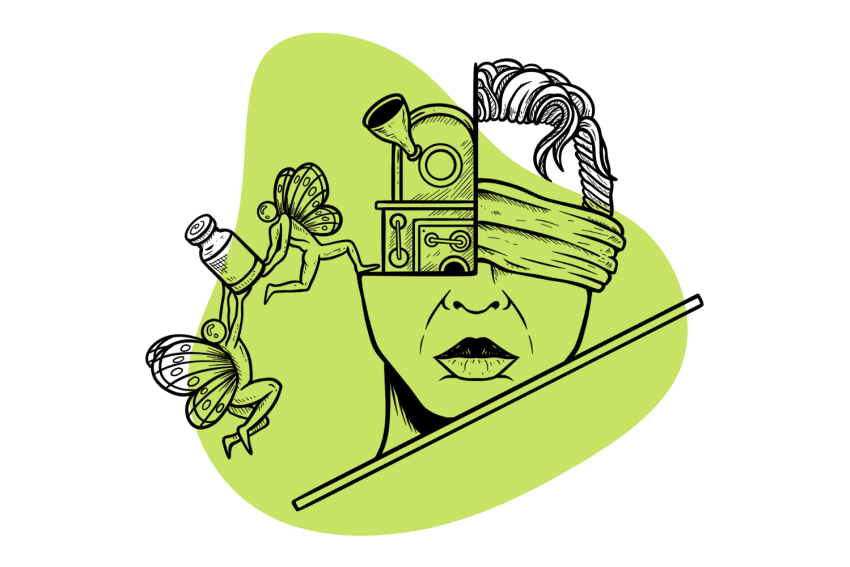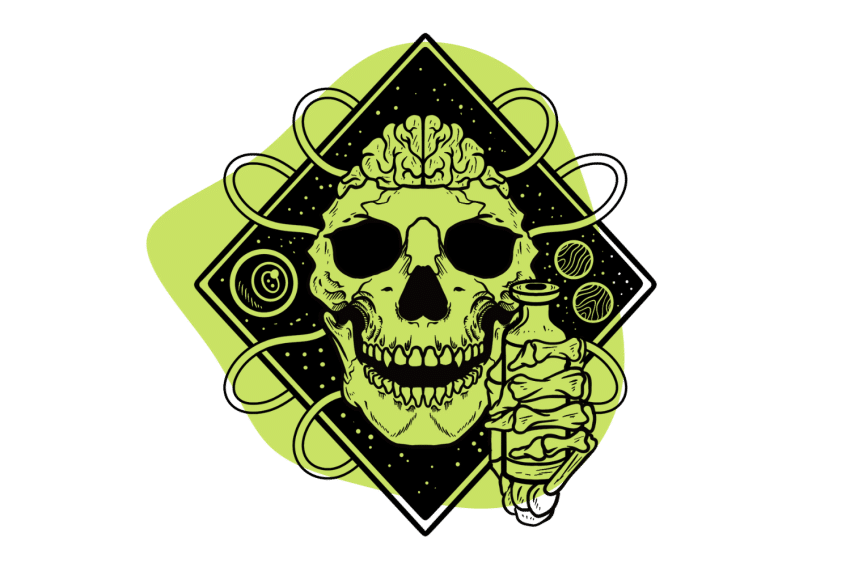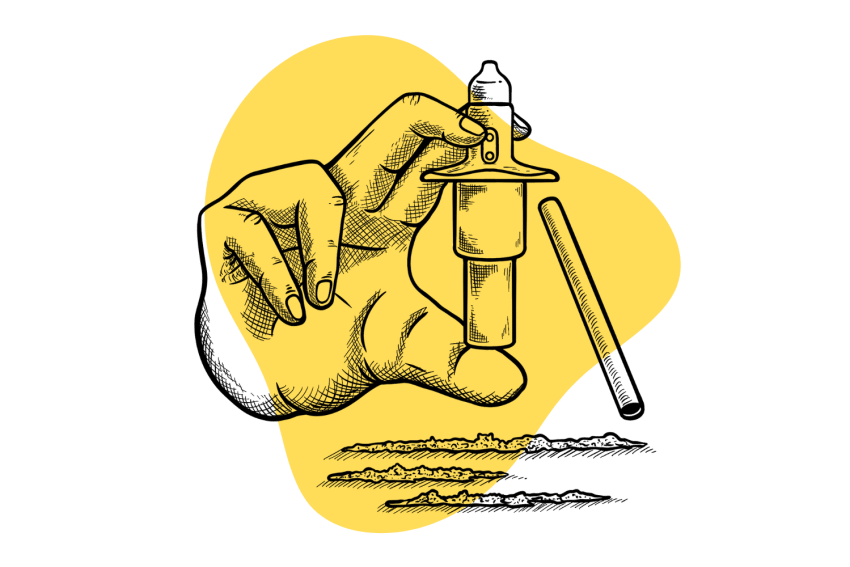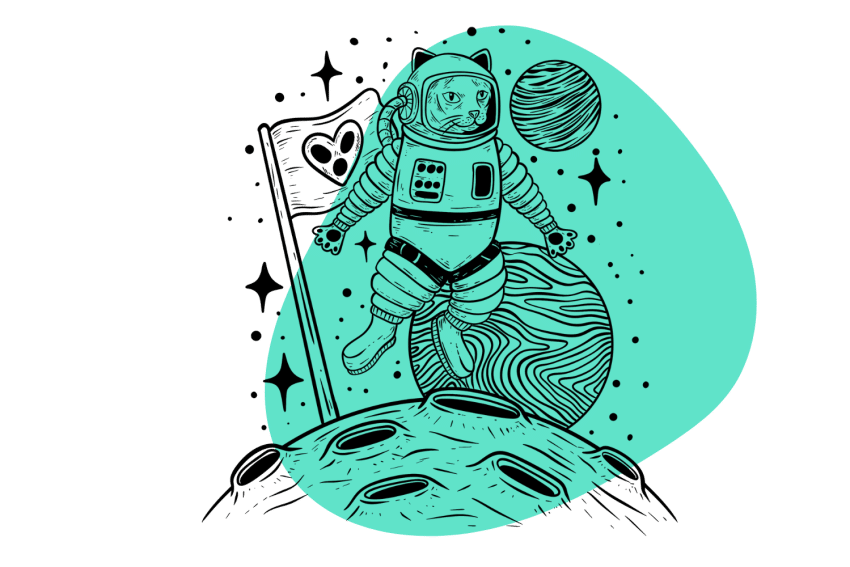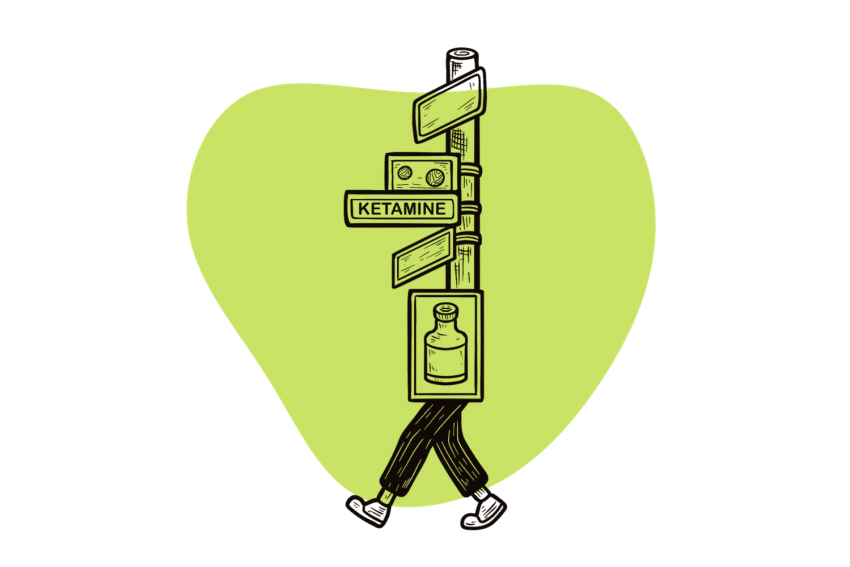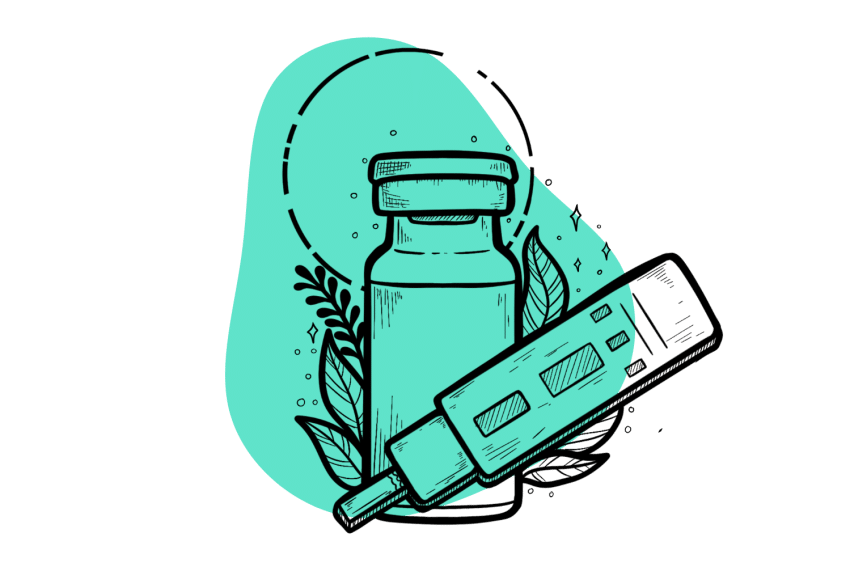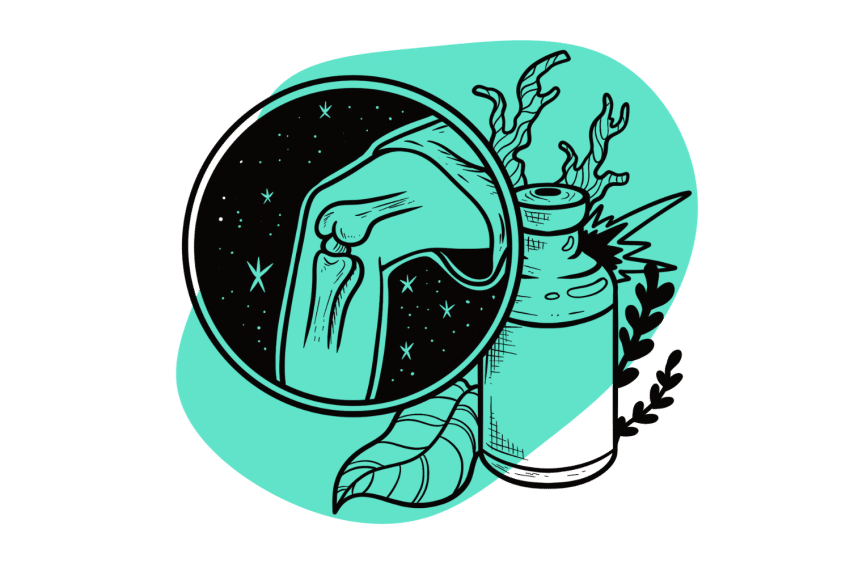Ketamine for Depression: How Many Sessions Does It Really Take?
Depression is one of the most popular reasons for using ketamine in a clinical setting today — but you should know what you’re getting into before you start.
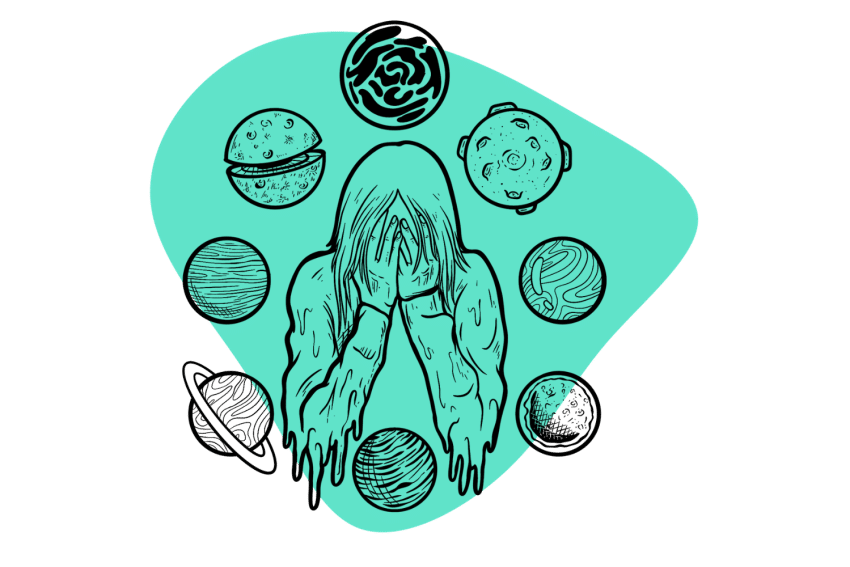
If you’ve been spending time on social media lately, you’ve likely come across ads for ketamine promising to “instantly cure” depression. While ketamine does have a rapid antidepressant effect on a large percentage of people, these ads rarely mention the ongoing treatment ketamine typically requires.
Ketamine alleviates depression quickly, but the effects fade after just a few days. This means most people need ongoing treatment.
Online ketamine providers sell treatment packs consisting of 4–8 sessions each — but there’s no definite end in sight. Most require customers to continually purchase add-ons.
Here’s what to expect from ketamine therapy for depression.
(At a Glance) How Does Ketamine Therapy for Depression Work?
Ketamine research shows it has a rapid-acting, short-lived antidepressant effect among many who try it [1].
With a large number of small-sample, short-term studies into ketamine’s antidepressant effect, there is still a lot we don’t know for sure.
Here are the key points we know so far:
- Ketamine often exerts a powerful antidepressant effect with a single dose.
- The duration of this effect varies from person to person, with some studies reporting an average duration of remission among 24 participants at just 18 days [2].
- Depression is a complex condition with root causes in social factors, meaning pharmacological options alone will likely never fully address the problem [3].
- Symptoms of depression can vary wildly, and some — like suicidal thoughts or bipolar depression — are cyclical and may be better suited to ketamine’s rapid yet short-lived action [4].
- The overwhelmingly positive research into ketamine is primarily funded by telehealth and pharmaceutical companies, using researchers with conflicting interests or (often) holding relevant patents.
With this in mind, it’s vital to remember ketamine therapy is likely going to be an ongoing treatment. While your clinician may taper your dosage down or require you to take some time off, most people don’t find that ketamine alone can permanently “cure” their depression.
What to Expect from Ketamine Therapy for Depression
Keeping this in mind, each form of ketamine therapy utilizes different techniques and schedules when dealing with depression.
The main forms of ketamine therapy today are:
- Spravato — A prescription-only, proprietary intranasal spray of a form of ketamine from Johnson & Johnson
- Off-Label Clinics — These obtain ketamine for anesthetic use and typically provide infusions and/or injections.
- Ketamine Telehealth (Online) Providers — Online, mail-order ketamine with a minimal (often non-existent) therapeutic component
Here’s what you can expect your regimen to look like if you seek treatment with some of the major ketamine options available today:
How Frequent Are Sprovato Doses for Depression?
Sprovato is the proprietary formulation of esketamine — one-half of the mirror molecules that make up racemic (or mixed equally) ketamine. The only way you can receive this medication is with a diagnosis of treatment-resistant depression and a written prescription from a healthcare provider.
Each nasal applicator holds 28 mg of esketamine, and most sessions call for administering 2–3 of them alongside your daily antidepressant medication. The recommended treatment course with Spravato starts with the “induction phase,” consisting of sessions twice per week for the first month.
After the induction phase, you can expect to administer your Spravato weekly for another month before moving to twice or once per month. Depending on the severity of your depression and the opinion of your provider, tapering off may also consist of lowering your dosage from 84 mg (3 applicators) to 56 mg (2) instead.
Importantly, this routine involves more sessions with ketamine than most others and is the most expensive. As a result, this is typically reserved for extreme conditions as a last resort option.
How Many Ketamine Infusions to Treat Depression?
Most infusions involve a slow drip of ketamine for 30–60 minutes, alongside frequent therapeutic sessions to discuss progress. Clinics may start new patients on 1–2 infusions per week before moving them down to 1–2 sessions/month or even quarterly.
This will vary depending on the clinic you visit, your specific condition, and (to be honest) the whims of your provider. Ketamine infusions usually take place in off-label clinics that utilize legal loopholes to provide therapy to patients.
Only Sprovato has clearance from the Food and Drug Administration (FDA); it’s still legal to buy various forms of ketamine for anesthetic use and provide it for alternative uses.
Since there’s no approved way to provide ketamine infusions for depression, there isn’t clear guidance on treatment, and research is far from conclusive. Still, most clinics follow — more or less — similar dosage guidance to Spravato therapy, with a higher likelihood of fewer doses.
While providing therapy, it’s important to research the clinic before you sign on. Along with the lack of regulation comes a lack of standards, and there are plenty of ketamine off-label clinics more focused on financial gain than treating depression.
How Many Ketamine Telehealth Sessions to Treat Depression?
Ketamine telehealth treatment options vary wildly depending on the service you use, and they rarely involve any therapeutic guidance. Most mail out 4–6 doses of ketamine and often involve weekly doses with limited or no oversight.
These frequently come in the form of troches or lozenges, which dissolve in the mouth, delivering a sublingual dose of ketamine. This method provides a steady dose over 10-15 minutes (during which you’ll have to refrain from swallowing).
After swallowing, it also provides a milder oral effect from the leftover ketamine you haven’t absorbed sublingually.
Without psychological guidance and regular counseling to get at the roots of depression, telehealth options are not likely to be a great option. Even the services they do offer — often for an additional fee — are rarely useful for a robust examination of mental health problems.
However, this isn’t a demonization of telehealth — it can be a great option for people with a regular mental healthcare provider they trust and can discuss their ketamine experience with.
Ultimately, each depression treatment will be different since the condition contains a spectrum of symptoms and severity. Regardless of the route you take with ketamine therapy, make sure to research each option thoroughly before deciding to move forward.
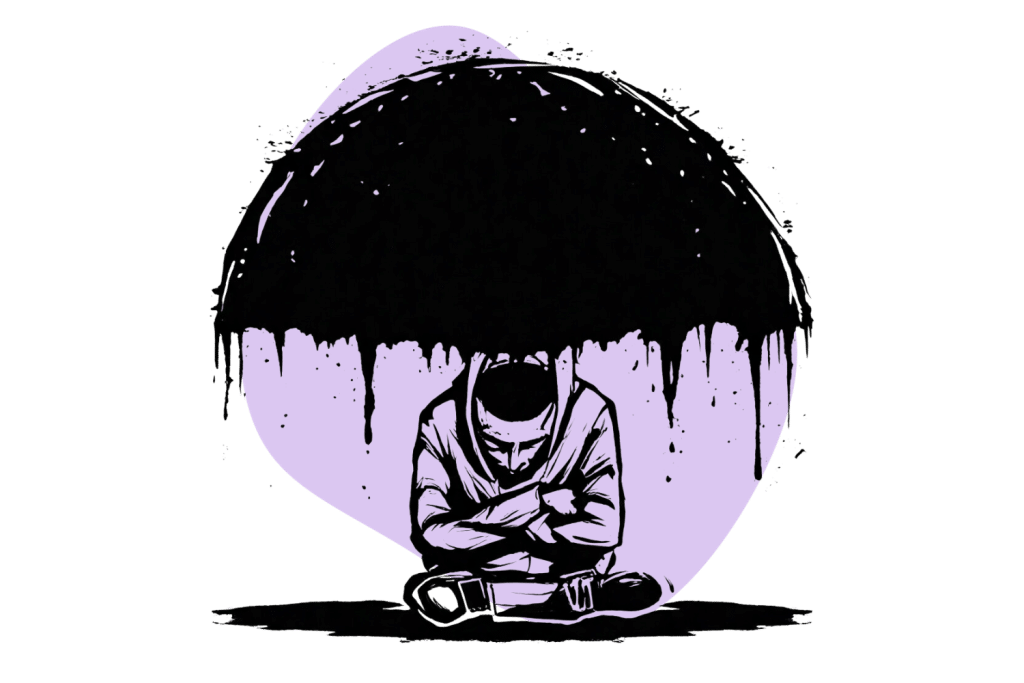
How Does Ketamine Help With Depression?
Ketamine sets off a series of complex interactions in the body and brain, contributing to its overall effect. Research suggests ketamine’s main mechanism is its antagonizing (or blocking) effect on the N-methyl-d-asparate receptors (NMDAR) [4].
After consumption, ketamine undergoes a rapid metabolization process to yield the metabolites norketamine, dehydronorketamine, hydroxyketamine, and hydroxynorketamine [5]. The nature and activity of these metabolites are still largely inconclusive outside of norketamine, but they likely have the highest affinity for NMDAR.
The NMDAR transmits glutamate — a neurotransmitter that excites neurons, making them more likely to fire off their designated transmitter, chemical, etc., depending on the location [6]. In this case, glutamate excites neurons responsible for memory, cognition, and mood control, which are all major components of depression.
Stress, anxiety, and depression could lead to excessive glutamate release in the hippocampus and restricted release in the prefrontal cortex and amygdala.
The hippocampus is responsible for long-term memory, and overstimulation can cause it to gradually become less effective (or atrophy). The amygdala and prefrontal cortex depend on steady amounts of glutamate to stabilize and process mood and emotions.
Researchers theorize that the mechanism may be the same as opioid’s effects on the NMDAR. Studies indicate opioid receptor activation decreases glutamate transmission by suppressing a “magnesium plug,” keeping the neurotransmitter stored in the receptor [7].
When ketamine antagonizes the NMDAR directly, it also stops the production and flow of sodium in/from the receptor (its resting “on state” function). This leads to a cascade of effects that remove the magnesium blockage, kickstarting “the effectiveness of high-affinity transporter glutamate,” whose energy source is the higher ratio of sodium outside the cell than inside.
As a result, ketamine releases large amounts of glutamate and may temporarily undo long-term damage.
Is S-Ketamine, Racemic, or R-Ketamine Better for Depression?
As alluded to above, “ketamine” typically refers to an equal parts (racemic) mixture of its “left and right hand” molecules (or enantiomers). S-ketamine has shown itself to be a far more effective antagonist of the NMDAR — roughly 4x as potent in this regard — but don’t count r-ketamine out just yet.
The active metabolite of s-ketamine is s-norketamine, and r-ketamine likewise produces r-norketamine. However, research indicates the active metabolite of r-ketamine may be (2R,6R)-hydroxynorketamine [8], which has its own possible mechanism of action for treating depression [9].
This means r-ketamine, which doesn’t result in the same subjective effects and possible side effects, could also potentiate glutamate transmission. Several studies have found r-ketamine to induce the same rapid antidepressant effect as s-ketamine without the dissociative effects or potential for adverse reactions.
Worth noting, however, is how difficult it is to find any of these studies where the authors don’t have a vested interest in a successful outcome. After an extensive search, we could not locate any recently published r-ketamine research without at least one author who was paid by pharmaceutical companies or held a patent dependent on successful outcomes.
Regardless, it’s likely r-ketamine plays some role in the overall effect of racemic ketamine — we simply don’t know how large of a role. Whether it’s beneficial on its own has yet to receive conclusive evidence from non-biased research.
Side Effects of Ketamine Treatment for Depression
While on ketamine, patients should expect potential “psychiatric, psychotomimetic, cardiovascular, neurological, and other side effects.” A 2018 review of ketamine studies sought to break down the side effects of using ketamine for depression.
Here are the most common examples of each:
- Psychiatric — “… anxiety, … agitation …, euphoria, … delusions or unusual thoughts, panic, and apathy.” In some cases, patients may experience psychosis, emotional detachment/blunting, and disorganized speech patterns.
- Psychomimetic — Abnormalities in senses and sensations ranging from “perceptual disturbance” to a total loss of your sense of self.
- Cardiovascular — Ketamine elevates blood pressure and heart rate and can lead to an irregular heartbeat or palpitations, though they rarely last beyond the ketamine session.
- Neurological — Some people experience lightheadedness or dizziness while on ketamine, along with headaches, heavy feelings of sedation, and poor coordination. Occasional involuntary movements are also not uncommon [10].
These are the short-term side effects of using ketamine, but depression treatment with ketamine requires repeated dosing, which opens up other potential concerns.
Long-Term Effects of Ketamine Therapy for Depression
While most patients tolerate occasional doses of ketamine well, repeated ketamine use can cause some severe problems. This is a warning people frequently give when discussing recreational use, but there’s a “selective reporting bias” and “limited assessment of long-term use” in clinical research, according to the 2018 report above.
Some of the major concerns around repeated ketamine use include “urinary tract symptoms as a well-documented side effect of ketamine.” Even a recent report on ketamine telehealth for depression, which declared it “safe and effective,” had one participant who had to seek a urologist [11].
This study excluded participants with a history of drug use, meaning this participant — given they were truthful about prior ketamine use — may have developed those symptoms in just four sessions over as many weeks. In clinical settings, this number of sessions is likely to take place within just two weeks, potentially increasing the likelihood of problems.
Long-term problems with the liver, cognition, and mood are possible as well — two other participants in the above study dropped out due to worsening anxiety and depression symptoms. Ketamine also carries a potential for dependence, and telehealth makes sustaining chaotic use of ketamine much more possible (albeit expensive).
It’s important to approach an ongoing ketamine treatment option with caution and take frequent breaks.
FAQ: Ketamine Treatments for Depression
Here are some of the frequently asked questions about the efficacy of using ketamine to treat depression:
1. When Is Ketamine Good for Depression?
Ketamine has not shown reliable long-term efficacy when it comes to depression, but this doesn’t mean its rapid action isn’t helpful in some instances. Research suggests ketamine’s activity may make it best suited for anxious depression, treatment-resistant depression, and suicidal ideation [4].
These subtypes and symptoms of major depression usually occur cyclically with a rapid, debilitating onset. Ketamine might reverse many of these problems within a single dose. From here, patients can maintain treatment with regular, infrequent doses or return as needed.
We still have a long way to go before we fully understand how ketamine assists with treating depression. Research showcases promising potential, but we don’t have conclusive evidence, and without addressing the root causes, you’ll likely only treat the symptoms of your depression rather than “cure” it altogether.
2. What’s the Relapse Rate With Ketamine and Depression?
The main appeal of ketamine for depression treatment comes from its rapid onset rather than its longevity. Nearly everyone finds the antidepressant effect of ketamine wears off eventually.
This can happen in as little as one week, or the session may be effective for far longer. Depression is often the result of various environmental and social factors, and it’s unlikely any medication or treatment will fully “cure it” without working through the underlying causes.
3. How Reliable is Research on Ketamine Treatment for Depression?
Very few ketamine studies are done by parties without a financial incentive for a successful result; often, they’re funded by ketamine telehealth companies [11] or performed by researchers holding a patent on ketamine or similar compounds [12].
Even harder is finding a study without a laundry list of pharmaceutical companies listed as “competing interests” in the paper’s success. This doesn’t mean none of the research is promising — in fact, it seems likely that ketamine could be a tremendous tool for certain conditions.
However, readers should approach these studies with caution, knowing the negative sides of the study are unlikely to be prominent (and often absent) in the writing.
4. What’s a Ketamine Dose Per Session for Depression?
Doses vary depending on the form of ketamine therapy you’re taking, but you can expect it to be similar to a large recreational dose. Some methods will require you to take multiple doses or, in the case of infusions, one dose over a long period.
| Route of Administration | Dosage Levels |
| Oral | Threshold: 40–50 mg; Low: 50–100 mg; Average: 100–300 mg; Strong: 250–450 mg; K-Hole: 450–650 mg |
| Intranasal | Threshold: 10–15 mg; Low: 15–30 mg; Average: 30–75 mg; Strong: 60–125 mg; K-Hole: 100–250 mg |
| Sublingual (Troches/Lozenges) | Most services offer 200–600 mg options |
| Intravenous (IV) | Between 1–4.5 mg/kg body weight, usually over 30–60 minutes |
| Intramuscular (IM)(Based on a weight of ~150 lbs) | Threshold: 15 mg (0.1 mg/lb); Low: 25mg (0.15 mg/lb); Average: 30 mg (0.2 mg/lb); Strong: 75 mg (0.5 mg/lb); K-Hole: 110 mg (0.75 mg/lb) |
Depending on what your provider determines, your dosage can vary from moderate to high and will bring on a similar level of intoxication as a recreational dose.
5. How Many People Don’t Respond to Ketamine Treatment for Depression?
Depending on the study you read, as many as 40% of people may not experience the rapid antidepressant activity of ketamine [13]. It’s unlikely to become effective down the road and also rarely a long-term solution, with many patients returning weekly or monthly indefinitely.
Clinics will often offer a re-evaluation period when charging for several doses upfront and may even refund money if it’s ineffective.
Subscribe to Tripsitter: Newsletter & Podcast
Unlock Your Mind: Subscribe for Expert Insights on Psychedelics 🍄🌵
References
- Serafini, G., Howland, R. H., Rovedi, F., Girardi, P., & Amore, M. (2014). The Role of Ketamine in Treatment-Resistant Depression: A Systematic Review. Current Neuropharmacology, 12(5), 444–461. https://doi.org/10.2174/1570159X12666140619204251
- Murrough, J. W., Perez, A. M., Pillemer, S., Stern, J., Parides, M. K., aan het Rot, M., Collins, K. A., Mathew, S. J., Charney, D. S., & Iosifescu, D. V. (2013). Rapid and Longer-Term Antidepressant Effects of Repeated Ketamine Infusions in Treatment-Resistant Major Depression. Biological Psychiatry, 74(4), 250–256. https://doi.org/10.1016/j.biopsych.2012.06.022
- Remes, O., Mendes, J. F., & Templeton, P. (2021). Biological, Psychological, and Social Determinants of Depression: A Review of Recent Literature. Brain Sciences, 11(12), 1633. https://doi.org/10.3390/brainsci11121633
- Matveychuk, D., Thomas, R. K., Swainson, J., Khullar, A., MacKay, M.-A., Baker, G. B., & Dursun, S. M. (2020). Ketamine as an antidepressant: Overview of its mechanisms of action and potential predictive biomarkers. Therapeutic Advances in Psychopharmacology, 10, 2045125320916657. https://doi.org/10.1177/2045125320916657
- Ketamine and Ketamine Metabolite Pharmacology: Insights into Therapeutic Mechanisms—PMC. (n.d.). Retrieved September 26, 2023, from https://www.ncbi.nlm.nih.gov/pmc/articles/PMC6020109/
- Pal, M. M. (2021). Glutamate: The Master Neurotransmitter and Its Implications in Chronic Stress and Mood Disorders. Frontiers in Human Neuroscience, 15, 722323. https://doi.org/10.3389/fnhum.2021.722323
- Mion, G., & Villevieille, T. (2013). Ketamine Pharmacology: An Update (Pharmacodynamics and Molecular Aspects, Recent Findings). CNS Neuroscience & Therapeutics, 19(6), 370–380. https://doi.org/10.1111/cns.12099
- Jelen, L. A., Young, A. H., & Stone, J. M. (2021). Ketamine: A tale of two enantiomers. Journal of Psychopharmacology (Oxford, England), 35(2), 109–123. https://doi.org/10.1177/0269881120959644
- Riggs, L. M., Aracava, Y., Zanos, P., Fischell, J., Albuquerque, E. X., Pereira, E. F. R., Thompson, S. M., & Gould, T. D. (2020). (2R,6R)-hydroxynorketamine rapidly potentiates hippocampal glutamatergic transmission through a synapse-specific presynaptic mechanism. Neuropsychopharmacology, 45(2), Article 2. https://doi.org/10.1038/s41386-019-0443-3
- Short, B., Fong, J., Galvez, V., Shelker, W., & Loo, C. K. (2018). Side-effects associated with ketamine use in depression: A systematic review. The Lancet. Psychiatry, 5(1), 65–78. https://doi.org/10.1016/S2215-0366(17)30272-9
- Hull, T. D., Malgaroli, M., Gazzaley, A., Akiki, T. J., Madan, A., Vando, L., Arden, K., Swain, J., Klotz, M., & Paleos, C. (2022). At-home, sublingual ketamine telehealth is a safe and effective treatment for moderate to severe anxiety and depression: Findings from a large, prospective, open-label effectiveness trial. Journal of Affective Disorders, 314, 59–67. https://doi.org/10.1016/j.jad.2022.07.004
- R-ketamine: A rapid-onset and sustained antidepressant without psychotomimetic side effects—PMC. (n.d.). Retrieved September 28, 2023, from https://www.ncbi.nlm.nih.gov/pmc/articles/PMC5068814/
- Vasavada, M. M., Leaver, A. M., Espinoza, R. T., Joshi, S. H., Njau, S. N., Woods, R. P., & Narr, K. L. (2016). Structural connectivity and response to ketamine therapy in major depression: A preliminary study. Journal of Affective Disorders, 190, 836–841. https://doi.org/10.1016/j.jad.2015.11.018

